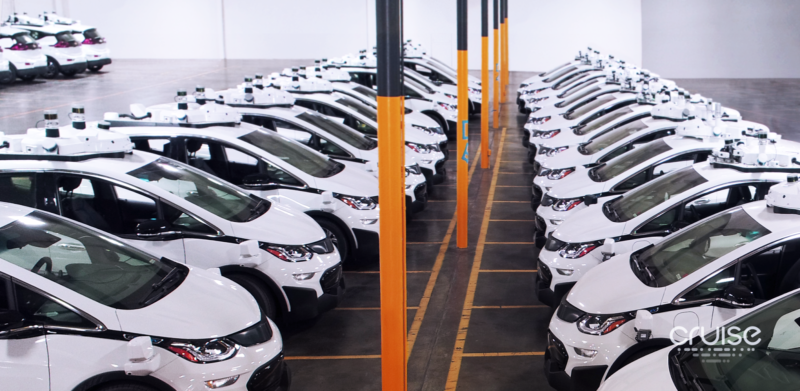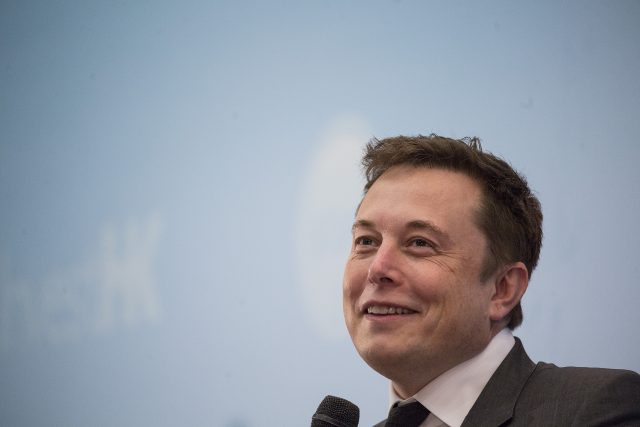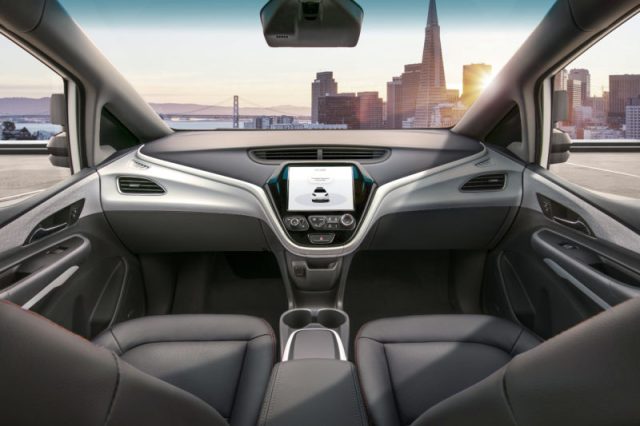
In November, Waymo announced it would begin testing fully driverless vehicles with no one in the driver's seat. Then, last week, GM petitioned the federal government for approval to mass-produce a car with no steering wheel or pedals—with plans to release it in 2019. In short, driverless cars are on the cusp of shifting from laboratory research projects to real, shipping products.
A new report from the consulting firm Navigant ranks the major players in this emerging driverless car industry. Navigant analysts see GM and Waymo as the clear industry leaders, while Ford, Daimler (teamed up with auto supplier Bosch), and Volkswagen Group are also strong contenders in Navigant's view.
Dominating the driverless car business will require both advanced autonomous vehicle technology as well as the ability to mass-produce cars with the necessary sensors and computing hardware. In this respect, Silicon Valley tech companies and the OEMs face opposite challenges. Waymo has long been the leader in driverless software, but it needs to find a partner to help it manufacture the cars that will run that software. Conversely, car companies know how to build cars but don't necessarily have the expertise to create the kind of sophisticated software required for fully self-driving vehicles.
GM's strategy to solve this problem was to acquire a Silicon Valley company called Cruise two years ago. Meanwhile, Waymo has signed a small deal with Fiat Chrysler for 600 vehicles but is still looking for a permanent partner that will help scale up its planned driverless taxi service.
Tesla is the only Silicon Valley company with significant experience manufacturing cars, so, in theory, it should be perfectly positioned to take advantage of the driverless trend. But that isn't how things have been playing out. Navigant actually ranks Tesla dead last, alongside Apple, out of 19 companies.
Tesla has struggled since ditching Mobileye

Tesla claimed an early lead in the autonomous vehicle race when it introduced a driver-assistance feature called Autopilot in 2015. The original version of Autopilot used hardware from an Israeli company called Mobileye, but the two companies split after a deadly Autopilot-related crash in 2016. Since then, Tesla has been trying to build its own version of Autopilot, known as version two, from the ground up. Tesla CEO Elon Musk said last year that he expects full self-driving capabilities to arrive in about two years.
If Musk could deliver on that timeline, it would make Tesla one of the leading companies in the driverless car race. But Tesla's Autopilot development efforts haven't gone smoothly.
"The Autopilot system on current products has stagnated and, in many respects, regressed since it was first launched in late 2015," Navigant writes. "More than one year after launching V2, Autopilot still lacks some of the functionality of the original, and there are many anecdotal reports from owners of unpredictable behavior."
"In a May 2017 TED talk, Musk claimed the systems being built today would be Level 5 capable"—that is, suitable for full self-driving with just a software update—"by 2019," Navigant notes. "However, this is unlikely to ever be achievable."
The reason, Navigant notes, is that Tesla's current systems lack several key components required for fully self-driving capabilities. "Current Tesla hardware lacks the ability to keep sensors clean and unobscured in poor weather as well as most of the redundant systems needed for fully automated driving," Navigant writes.
Waymo and GM have both touted the extensive redundancy in their own driverless car prototypes. Both companies' vehicles have at least two computers on board so that the second computer can take over control if the first one fails. They also have redundant power supplies and redundant controls for steering and brakes, ensuring that the vehicle will be able to come to a safe, controlled stop in the event that any single component fails.
Today's Tesla vehicles also lack lidar sensors, which most other companies in the industry consider essential for full autonomy. And "even Nvidia has expressed doubt that the computing hardware it sells to Tesla is capable of supporting full automation reliably," Navigant argues.
So there's reason to question Tesla's promise that today's Tesla vehicles can be upgraded to full self-driving capability—in 2019 or ever.
The larger problem, though, is that Tesla just doesn't seem to be making progress as rapidly as others in the industry. Tesla's attention has been consumed by the extremely slow rollout of the Model 3—Tesla delivered a paltry 1,550 Model 3 vehicles in the fourth quarter of 2017. And Tesla's Autopilot division lost a number of key engineers and managers last year.
Elon Musk has a long history of eventually reaching his goals, even if it happens months or years after his original target date. So Tesla will probably master fully driverless technology eventually. But the problem is that the rest of the industry is moving faster than most people expected just a couple of years ago. By the time Tesla ultimately achieves full self-driving capabilities, it may find that it's entering a crowded market.
GM’s Cruise acquisition is paying off big time

Navigant considers GM to be the driverless car leader, and it's not hard to see why. The automotive giant purchased a little-known driverless car startup called Cruise two years ago, and Cruise has been thriving ever since.
This kind of acquisition creates a danger that the new corporate parent's bureaucracy will smother the innovative culture that made the startup successful in the first place. But GM has managed to give Cruise CEO Kyle Vogt enough autonomy—and enough clout within GM more broadly—to continue rapidly improving its driverless car technology.
As a result, Cruise has emerged as one of Waymo's top rivals in developing fully driverless vehicle technology. While Waymo has shifted much of its testing efforts to Phoenix (where state regulatory oversight is lax), Cruise has concentrated on testing in San Francisco. Vogt has argued that San Francisco is a better testing environment because cars encounter unusual and difficult situations—like construction zones, pedestrians, and emergency vehicles—much more frequently, allowing Cruise to improve its software more quickly.
Cruise's big advantage, though, is that being owned by GM gives it access to vehicle design and manufacturing infrastructure that no technology startup could develop independently. Cruise engineers have been working closely with GM engineers on a modified Chevy Bolt that has been re-designed for driverless capabilities. Last week, GM petitioned the federal government for approval to begin manufacturing modified Bolts with no steering wheels or pedals as soon as next year.
Once Cruise is confident its software is safe and reliable, GM can begin producing these vehicles in volume. That means that, even if Cruise isn't the first to market—it looks like Waymo is likely to claim that honor—Cruise may be able to scale up more quickly, allowing Cruise to eventually capture a large share of the market.
reader comments
183